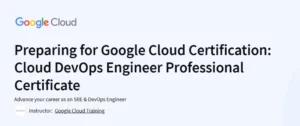What will you learn in Mastering Perl Scripting Certification Training Course
Master Perl syntax, data types, and built-in functions for rapid scripting
Use regular expressions and text-processing techniques for parsing and reporting
Work with files, directories, and system commands to automate tasks
Leverage complex data structures: arrays, hashes, references, and objects
Write maintainable code with modules, CPAN libraries, and test suites
Program Overview
Module 1: Perl Fundamentals & Environment
⏳ 1 week
Topics: Interpreter setup, scalar vs. list context, basic operators
Hands-on: Write “Hello, World!” and simple arithmetic scripts
Module 2: Control Structures & Subroutines
⏳ 1 week
Topics:
if/else, loops (for,foreach,while), subroutine definitionsHands-on: Build a menu-driven script with reusable functions
Module 3: Regular Expressions & Text Processing
⏳ 1 week
Topics: Pattern matching, capture groups, substitution, modifiers
Hands-on: Parse log files to extract and summarize error counts
Module 4: File I/O & System Interaction
⏳ 1 week
Topics: Reading/writing files, directory traversal, backticks vs.
systemcallsHands-on: Automate daily backups and generate CSV reports
Module 5: Data Structures & References
⏳ 1 week
Topics: Arrays, hashes, nested data, code and data references
Hands-on: Create a data-driven contact manager using nested hashes
Module 6: Modules, CPAN & Testing
⏳ 1 week
Topics: Writing reusable modules,
usevs.require, Test::More basicsHands-on: Package a utility module and write unit tests for its functions
Get certificate
Job Outlook
Perl scripting remains vital for systems administration, bioinformatics, and legacy application support
Roles: DevOps Engineer, Systems Administrator, Bioinformatics Analyst, Automation Specialist
Salaries range from $80,000 to $130,000+ depending on domain and experience
Strong demand in organizations maintaining mission-critical Perl codebases and automation
Specification: Mastering Perl Scripting Certification Training
|
FAQs
- No prior experience is required; the course is suitable for beginners and professionals alike.
- It introduces Perl syntax, operators, variables, and control structures step by step.
- Hands-on exercises help learners practice writing basic scripts and functions.
- Basic familiarity with computers and logical thinking is helpful but not mandatory.
- By the end, learners can confidently create and execute Perl scripts for automation and data manipulation.
- Yes, the course covers writing scripts for file handling, data parsing, and text processing.
- Learners practice using loops, conditional statements, and regular expressions.
- Techniques include automating repetitive tasks, parsing log files, and manipulating datasets.
- Hands-on exercises demonstrate real-world applications of Perl scripting.
- Advanced scripting for large-scale automation may require additional practice.
- Yes, the course is designed to help learners prepare for official Perl certification exams.
- Learners practice exam-oriented concepts, sample questions, and scenario-based exercises.
- Techniques include mastering Perl syntax, functions, modules, and best practices.
- Hands-on exercises simulate real-world exam scenarios for better preparation.
- Passing the exam validates professional competency in Perl scripting.
- Yes, the course introduces using Perl modules, libraries, and CPAN for efficient scripting.
- Learners practice importing modules, using built-in functions, and managing dependencies.
- Techniques include modular programming, code reuse, and extending script functionality.
- Hands-on exercises help learners leverage libraries for real-world scripting tasks.
- Advanced module creation and custom libraries may require additional exploration.
- Yes, Perl scripting skills are valuable in system administration, automation, and data processing roles.
- Learners can apply scripting knowledge in IT, DevOps, and backend development projects.
- Hands-on exercises provide practical examples to showcase Perl proficiency.
- Certification helps learners stand out for jobs, promotions, or freelance opportunities.
- Advanced career growth may require additional programming languages or tools.





